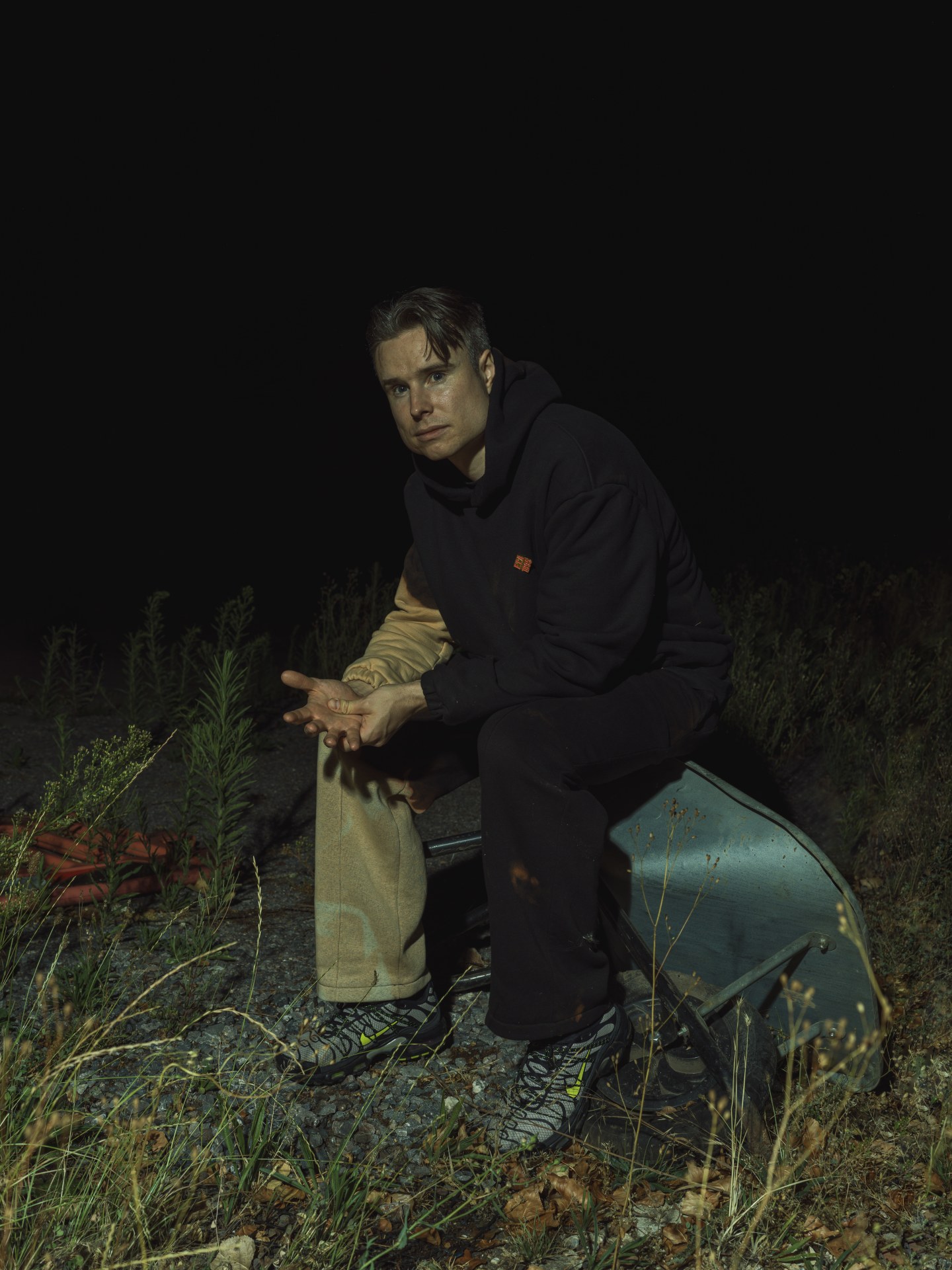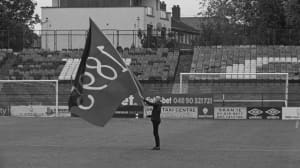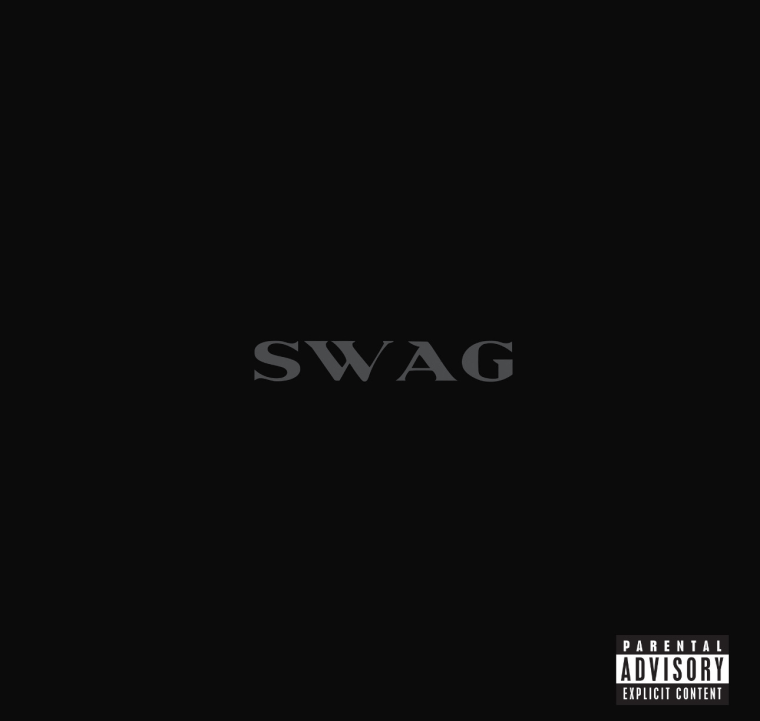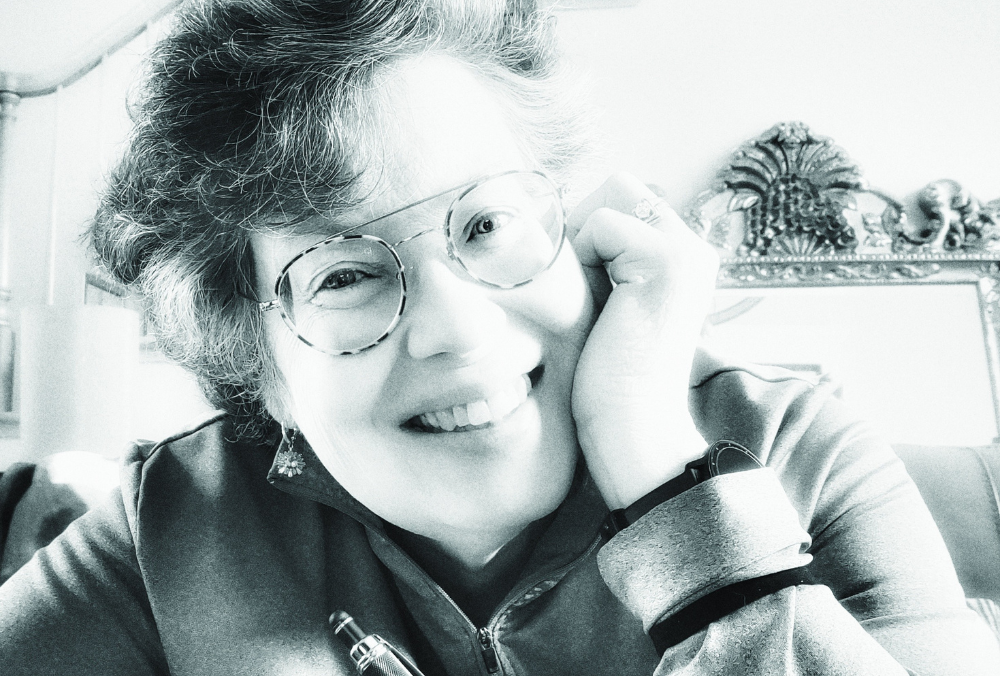Carving The Stone, and finding a reason to write”>
Hugh Quberzky
After listening to For Those I Love’s new album, Carving The Stone, I had worried that David Balfe might not be much of a talker during our interview. His spoken-word lyrics are rich vignettes of modern living and the feelings buried deep inside set to pulsating electronic beats; they’re so detailed that it has crossed my mind that he might feel they speak for themselves. Soon after our first Zoom conversation begins, however, my fears ebb away. A simple question like “Did you have a good time at Glastonbury?” yields generous, thoughtful answers from the Dublin musician.
It was at the festival this year where Balfe performed the first For Those I Love set in two years, as well as joining Overmono to recreate their remix of his song “I Have A Love.” The long tail of the 2020 track is in part what inspired Balfe to keep For Those I Love an active project. His 2021 debut was a project defined by the loss of Balfe’s close friend to suicide three years prior, and the ensuing grief that devastated his community became the inspiration for many of the songs. It wasn’t clear, to fans and Balfe himself, if there was anything more to come after the catharsis earned by putting that album out.
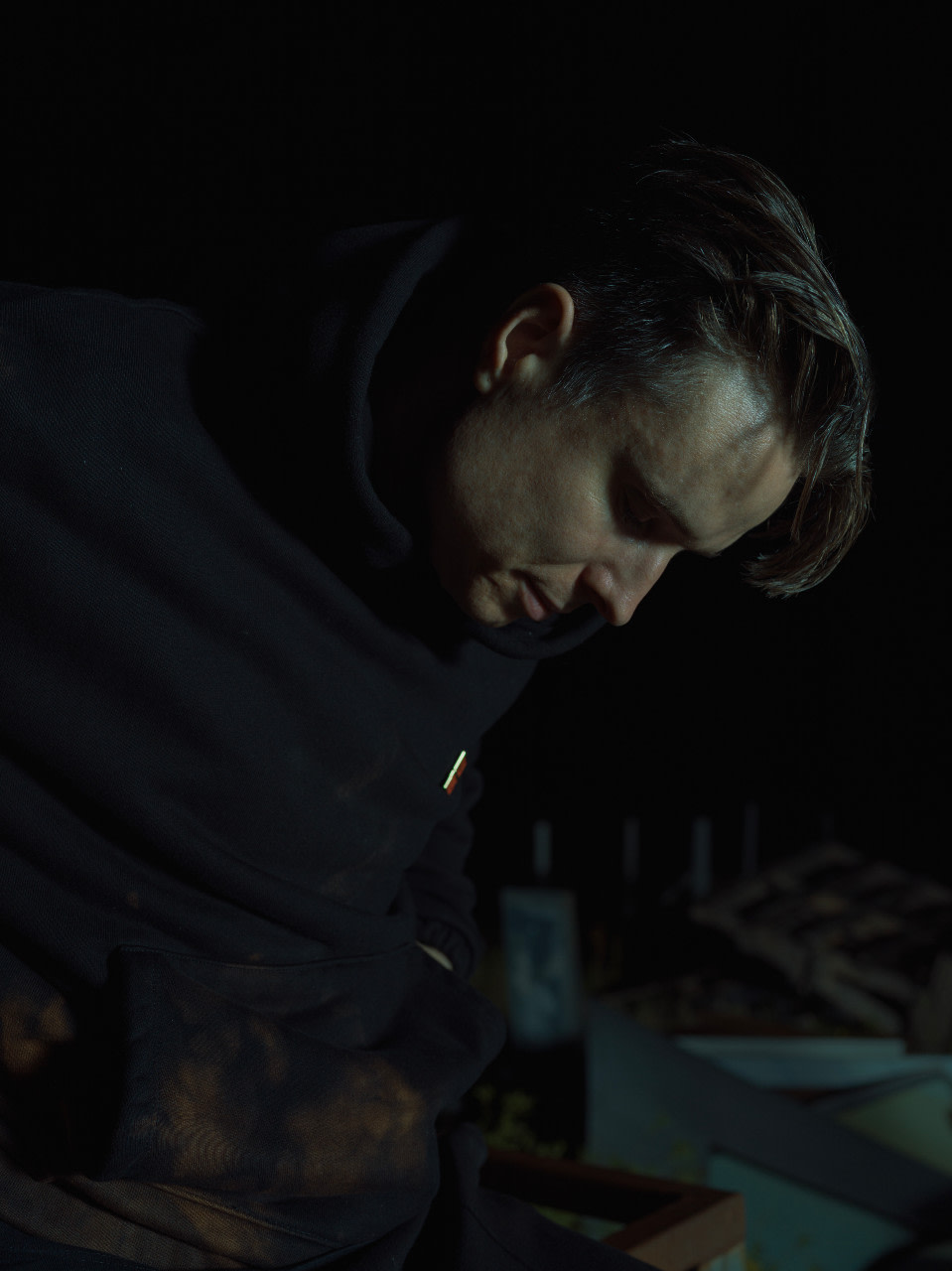 Carving The Stone, and finding a reason to write”>
Carving The Stone, and finding a reason to write”>
Hugh Quberzky
“The second album draws heavily from conversations I’ve had over the past four or five years, about where we fit in the world, how quickly things are changing, and the growing sense of instability,” Balfe explains. “We talked constantly about the uncertainty of the future, trying to make sense of it all. I wanted to take those ideas and translate them into something concrete.
On the new project, Balfe opts for a more widescreen examination of the pressures exerted on his fellow Dubliners as they fight to survive in what the tech industry has helped become one of Europe’s most expensive cities to live in.
This pressure is felt most keenly on “Of The Sorrow,” in which Balfe talks about how “eyes are bloodshot red when you’re looking at the rents” and the need to “bankrupt yourself just to stay where you belong.” In addition to the societal violence that runs through the album, there is also a visceral trail of blood smeared across songs like “Mirror” in which Balfe recalls a “ballyed up man with life and death in his veins” pointing a double barreled shotgun in his direction. It’s in these moments that Carving The Stone transcends the antri-gentrifcation method and pivots into something closer to a neo-noir for people who use the term “technofeudalism.”
“I do think a lot of the album is about resistance,” Balfe says, keen to establish that his new project is more optimistic in its outlook than his tormented debut. “I see hope as a form of resistance. He points to the “Of The Sorrows” lyric “I have to leave / I’ll never leave” as a commitment to his home town as well as the way in which the album ends. “I’ll carve this stone until darkness comes,” goes “I Came Back To See The Stone Had Moved.” “Because I am choosing to live.”
Read on for Balfe’s thoughts on the continued existence of For Those I Love, the cost of living crisis, Irish cultural dominance, and his love for both The Hold Steady and billy woods.
The FADER: Do you remember when you first started to feel conflicted about life in Dublin?
For Those I Love: I think back to being 17 during what was a tough economic time in Dublin, just after the financial crash. Older people would tell us to hang tight, work through it, and hope for better times. That uncertainty maybe gave some of us more freedom to explore creative paths, because nothing felt guaranteed.
But then, over the years going through college, doing odd jobs, freelance work, eventually trying to find more stable employment, the stress of city life grew steadily. It became a more prominent part of my conversations, my writing, and my perspective.
Ironically, it’s often only when real tragedy hits, like the loss of a friend or family member, that all that daily stress gets put back into perspective. You’re reminded that what really matters is the people you love and the stability they bring. That’s a big emotional current running through my work over the years.
“No Scheme” is one of the most distinctive moments on the album. Could you talk about how it relates to “Top Scheme” from your debut album?
The anger and frustration that drove “Top Scheme” reappeared when writing “No Scheme,” but it had evolved. The older song was more immediate, more frantic, written from a raw, desperate place. “No Scheme” comes from a more reflective mindset. The anger is still there, but it’s more nuanced, more self-aware. Where “Top Scheme” looked outward—at the conditions around me. “No Scheme” turns inward, exploring my own complicity and complacency within those same societal issues.
Both songs are direct critiques of class, economic pressure, and societal structures. “Top Scheme” wrestled with the trade-off of labor for care—how much work I had to do just to afford therapy and survive. “No Scheme” builds on that idea but shifts the focus. It’s not just about accessing care anymore, it’s about seeking long-term stability, questioning the larger system that demands so much labor in exchange for basic well-being.
So while the songs come from the same emotional place, anger, frustration, class tension, they reflect different stages of my life. I wanted to explore those same emotions but in a more layered, thoughtful way. That’s what I’m most interested in, both in life and in my writing: the nuance.
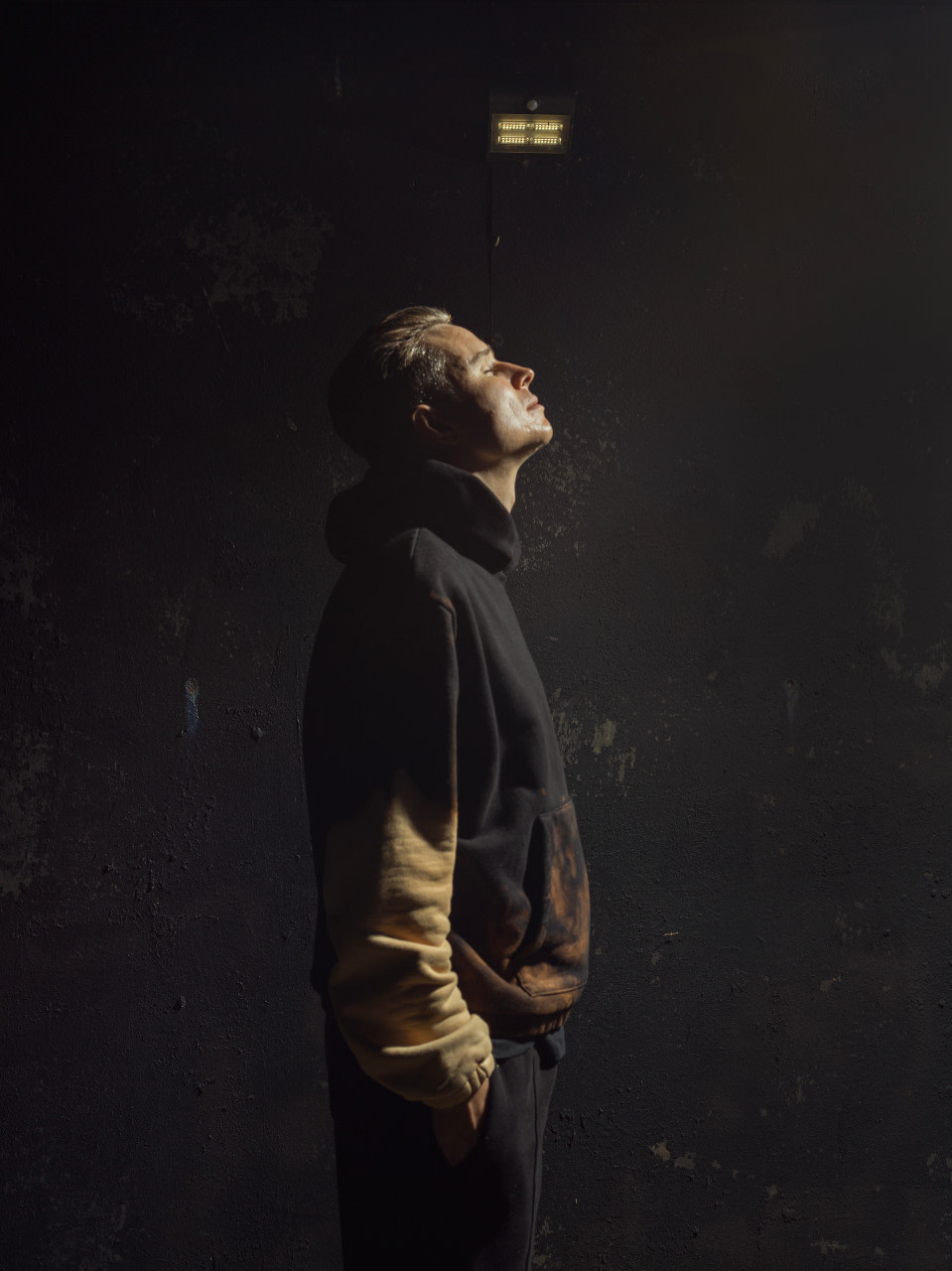 Carving The Stone, and finding a reason to write”>
Carving The Stone, and finding a reason to write”>
Hugh Quberzky
Violence is a motif that runs through your lyrics. Are there other writers that you feel are good at capturing those feelings?
I’ve been influenced by records like The Infamous by Mobb Deep or Illmatic by Nas. These were made by incredibly young artists, yet the violence they describe feels emotionally grounded. It serves a purpose beyond shock. In my own work, [violence] is rarely there just to recount the event—it’s a way to open up broader themes.
The goal is never to sensationalize, it’s to contextualize. Often, the characters’ relationship to violence helps express something deeper: trauma, social conditions, inequality. These stories are grounded in the world I’ve lived in. Craig Finn from The Hold Steady has had a huge impact on me in that sense. He rarely writes directly about violence, but his use of storytelling as a vehicle to talk about class, emotion, and identity is something I’ve always admired. It’s what good writing should do—transcend the literal and carry more meaning than the words on the page.
The artist I listen to most, though, is billy woods. He’s consistently been at the top of my listening stats for years. I don’t know that I see direct similarities between us, but I’m deeply inspired by his work.
Carving The Stone is a heavy album but it’s not devoid of hope. Where do you locate the optimism in the album?
I was very deliberate about how I bookended the album. It begins in a fairly grim place, not reflective of where I am now but a place I’ve certainly visited emotionally over the past few years. Hope comes in waves, like stability or joy. I’ve felt those waves more and more, and tried to reflect that in the closing section of the album, not just lyrically, but sonically too.
In the final monologue, I wanted to pull together many of the album’s core themes: labor, education, love (both given and received), friendship, family, and faith – not necessarily religious or spiritual, but a belief in the possibility of better days. I wanted to close the record with a stark dedication to life itself—to the choice to be here. That feels truest to where I am now.

